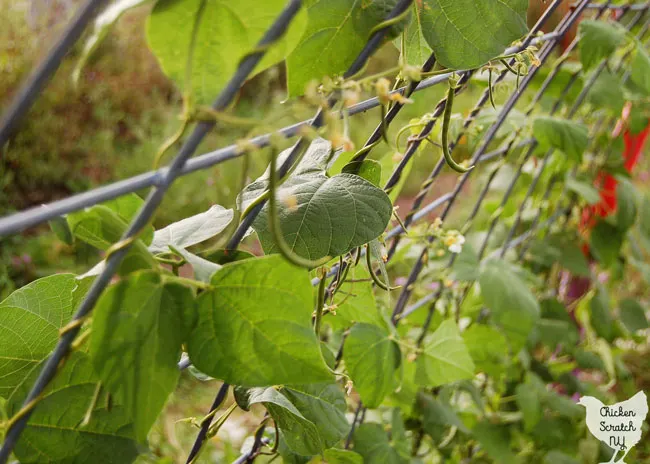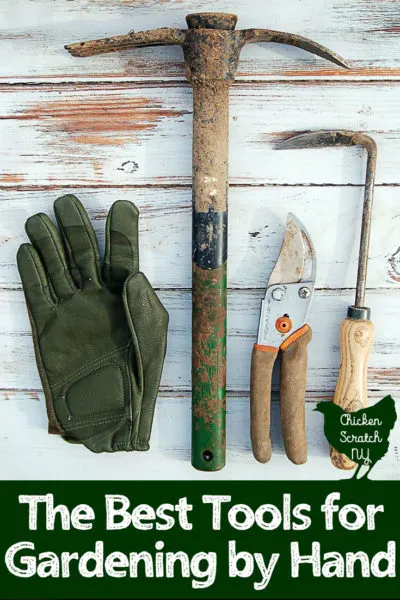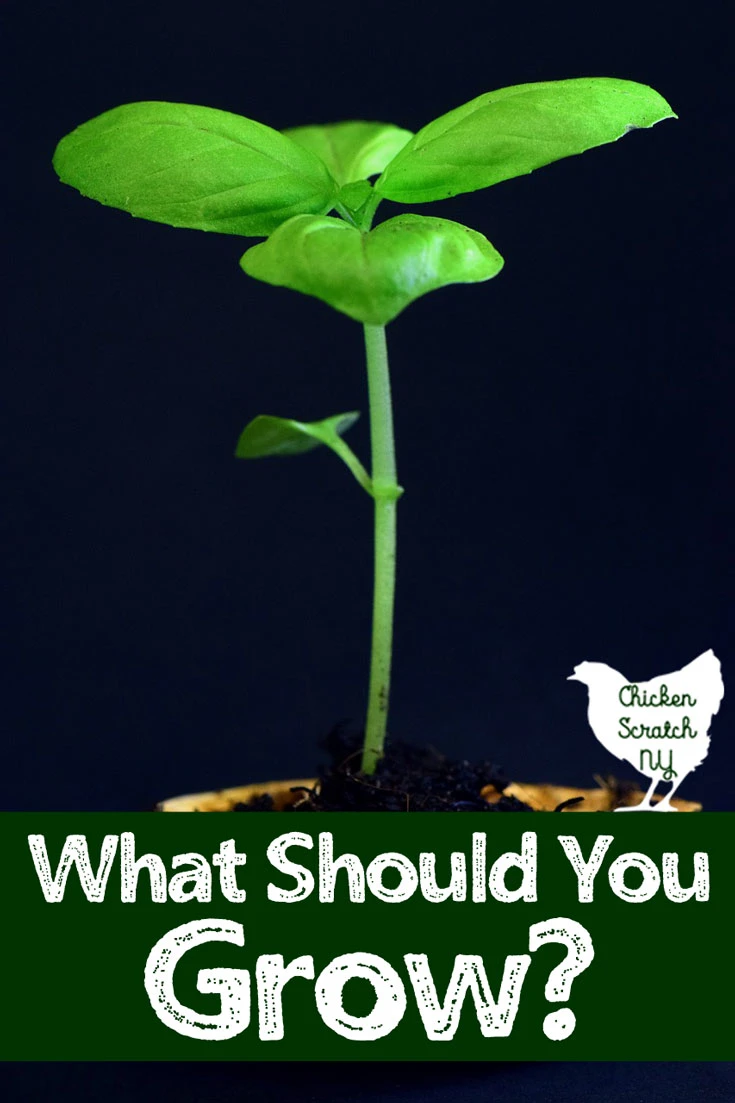Despite the large variety of vegetables we plant in our gardens they can be broken down into a surprisingly small number of vegetable families. These family groups are really important when it comes to crop rotation and pest management.

When you’re just getting into gardening it can be really overwhelming to remember everything but if you break it down to family level instead of by variety things get a little easier.
Even though there is some serious variation in some of these families they tend to have similar requirements, growth habits, and issues.
Crop Rotation
Crop rotation sounds confusing but it’s actually pretty simple. At its most basic, it’s just making sure you don’t plant the same thing in one spot back to back.
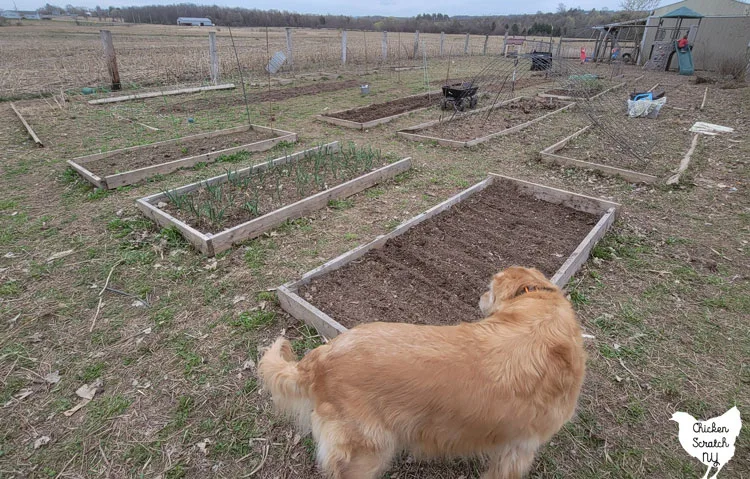
Certain pests and diseases can build up and overwinter in the soil so it’s important to keep track of where you plant things. That way you can switch to something else for the planting or even the next season.
Vegetables in the same families tend to have the same pest and disease problems so it’s important to know who is related to who. That way you can try to separate varieties to limit pest infestation or disease spread.
Different crops have also different nutrient requirements, if you grow the same thing in the same place year after year your soil will become defficient in some areas.
On the other hand, legumes add nitrogen to the soil and sturdy root crops like radishes dig deep into the soil, breaking up clumps and pulling up nutrients.
You can take a simple approach to crop rotation, just by following up one harvest with a crop from a different family. Or you can create a multi-year plan where you rotate following a specific pattern like this:

I’m still breaking ground and establishing new beds every year in my garden and I’m following a simple plan. New beds get planted with squash (I fill/cover them with alpaca poo the fall before) and then it’s a free for all giving the root vegetables first dibs on the deepest beds and I do my best not to go back to back.
The larger your garden is the more room you’ll have to rotate through and give areas a break from a particular family. In smaller gardens, you might not have space for a big rotation plan but do your best to mix it up where you can.
It will also depend on what you like to grow and eat, most of my garden is taken up with brassicas in the spring and Solanaceae in the summer. But if you hate cabbage and turnips you don’t have to worry about working them into your rotation.
When you’re planning out your crop rotation keep your cover crops in mind and what families they belong to. If you have to double up on a family plant the cover crop after the vegetable crop, that way if you have any issues they’re more likely to affect the plants you aren’t eating.
Read more about Cover Crops
Buckwheat and the grain cover crops (oats, wheat & rye) don’t have a vegetable counterpart which makes them really easy to work into a crop rotation. Mustard & radish belong to the brassica family while field peas & broad beans belong to the legume family.
The Vegetable Families
There are a lot of ways we can break down garden vegetables (be season, planting tine, etc) but when it comes to crop rotation and pest control we have to get scientific.
You might think of “salad greens” as a definitive group or family but it’s actually the opposite. Lettuce, spinach, and kale all belong to separate families and have their own pests and issues.
Some vegetable families are huge and some are small; for example, most of your spring crops will be in the cabbage family while the poor lettuce family only has one commonly grown member.
Today I’m going to break down the main vegetable garden families so you can get a handle on how to best use your garden space and rotate your crops. I’ll give you a heads up, this is a lot of info!
Alliaceae or the Onion Family
The onion family contains vegetables, herbs, and decorative plants. They all have a distinct smell and the majority have rounded balls of florets on tall, thin stems.
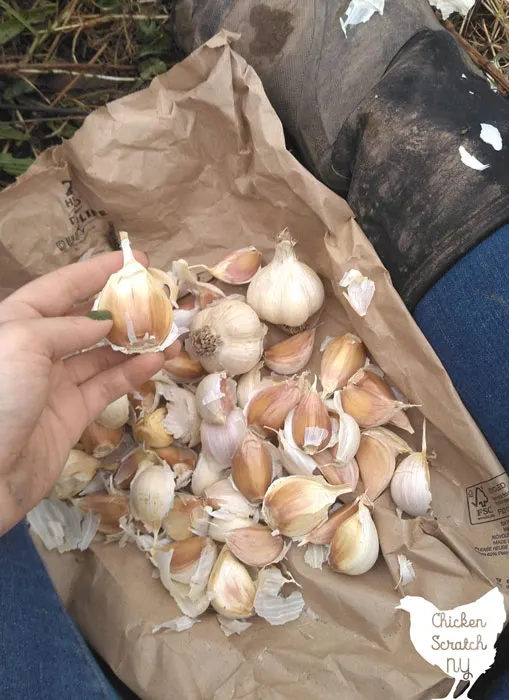
They’re frost tolerant and some varieties are even grown over the winter where they emerge from the soil long before it could be worked. By April my chives are over a foot tall and we still have 1.5 months before the last frost date!
Some members of the onion family are easily grown directly in the garden from seed but most are grown by transplanting cloves, bulbs, or plants. Onion seeds aren’t known for being long-lasting and you should plant to repurchase seeds every year.
Garlic is grown by planting individual cloves in the late fall, the plants emerge in the early spring and new heads can be dug and dried in late June to July.
It’s one of the easiest vegetables to grow, the majority of the work is done late in the season when everything else has wrapped up, and with one early season weeding session and a thick layer of mulch it’s largely hands-off until harvest.
Learn How to Grow Hardneck Garlic in your vegetable garden
Shallots are usually grown from sets or bulbs. They can be planted in the spring or fall and each bulb you plant will divide creating more bulbs.
They’re a little bit like garlic, you can harvest them for greens or bulbs, but they maintain individual bulbs in papery wrappers in each clump instead of forming one single head.
Scallions, Welsh onions, or green onions are a quick crop that can fill in garden space in the spring or fall. They can be planted 4-6 weeks before the last frost date and harvested around 60 days.
Bulb onions are a little bit trickier because they depend on day length to trigger bulb formation. After planting the opinions will focus on root and leaf growth until the days reach a certain length and then they will switch gears and start to form the actual onion bulbs.
When you’re buying onion plants, seeds or sets pay attention to if they’re long-day, short-day, or intermediate-day onions. You’ll need to match that to your location, the farther north you go, the longer your days are and the reverse is true, southern states have shorter days.
Leeks are either grown from seeds or plants. They require a long growing season and should be planted deply or hilled in order to get longer white sections.
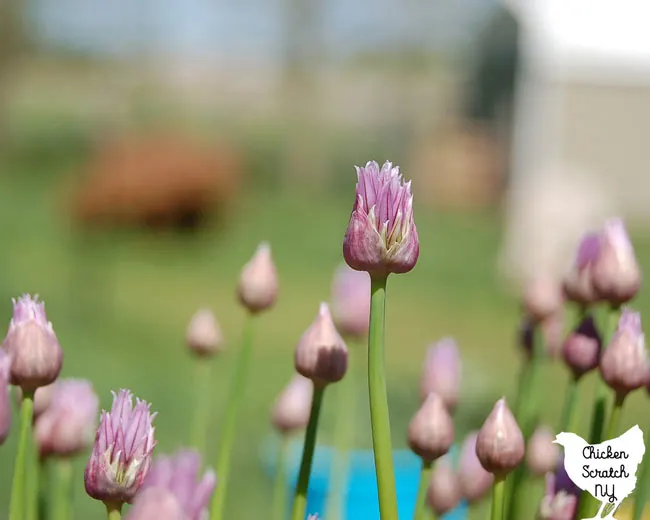
The final stop on this train is chives. I love chives, I have both common chives with purple flowers and an oniony flavor and garlic chives with white flowers and a garlicky flavor growing in my garden.
Chives are perennial and they will spread via expanding clumps. I keep mine in me herb garden but you can plant them in a pot or give them a permanent spot in the garden.
The leaves are very tasty but don’t forget these guys do double duty. Not only do bees love the beautiful flowers but the’re also edible! Chives can be grown from seed but the easiest way to it get a division from an established clump.
Read more about Edible Flowers
Less common members of the allium family include tree, potato or walking onions, and elephant garlic.
Asteraceae or the Lettuce Family
Unless you’re into growing strange and unusual things it’s very likely that your only lettuce family crop will be lettuce. That doesn’t mean it’s a basic or boring family!

Lettuce is a surprisingly versatile crop, you can grow lettuce for microgreens, baby greens, cut-and-come-again salad greens, or as individual heads depending on the variety, spacing, and timing.
If you’re used to iceberg and romaine lettuce being your only options you are in for a treat. There are hundreds of lettuce varieties including different leaf shapes, colors, and forms like loose-leaf lettuce, romaine type, and individual heads.
I’m a fan of lettuce mixes that contain a variety of different leaf shapes and colors all in one. You can plant them in a thick strip and pick individual leaves or cut the leaves off a few inches above the ground and let the plants regrow.
There are also mesclun mixes that contain a mix of lettuces and other greens, usually quick-growing brassicas like mustard and arugula.
You can start lettuce inside under grow lights or directly seed it into the garden. Personally, I only start head lettuce inside if I have extra space in my seed trays.
Less common members of the lettuce family are chicory, endive, globe artichoke, Jerusalem artichoke, salsify, and scorzonera.
Brassicaceae or the Cabbage Family
The cabbage family is hands down the biggest vegetable family in the garden. It’s also the family that shows the largest variation and has the most aliases, you’ll see them referred to as brassicas, the cabbage family, the broccoli family, and as cole crops.
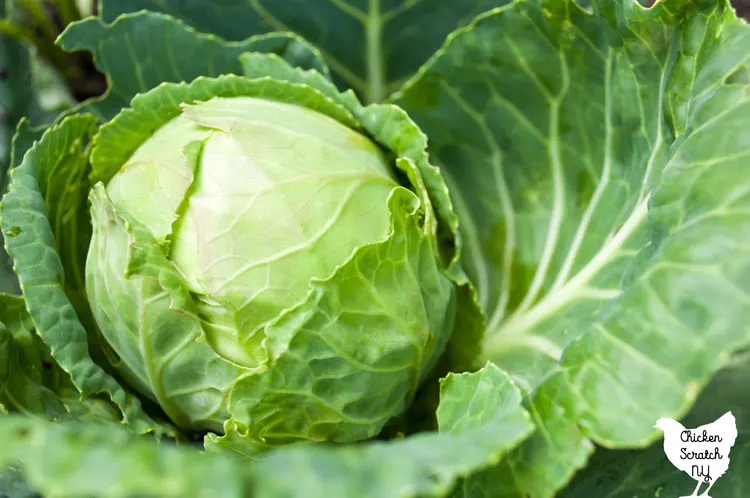
This family contains vegetables grown for roots (radishes, turnips & rutabagas), leaves (arugula, Brussels sprouts, cabbage, collards, kale, mustard & pak choi), florets (broccoli & cauliflower), and stems (kohlrabi). They all have one common ancestor, wild mustard.
Another thing they all have in common is a preference for cool weather and lots of water. Brassicas are often planted in the early spring and then again in the later summer for fall or winter harvesting.
They also have similar flowers with 4 petals arranged in a cross. Not that you’ll ever see flowers on most of these plants unless you’re intentionally growing them to save your own seeds.
Learn more about Growing Radishes and 5 Reasons you Need them in your Garden
Some brassicas grow really quickly and are a great option for succession or intercropping. Radishes, arugula, and small turnips can be used to fill up empty bed space and are ready to harvest in about a month.
Other members of the broccoli family take much longer to mature. Fortunately, crops like broccoli, cauliflower, and cabbages are easy to start indoors and transplant into the garden.
Learn more about Starting with Seeds Vs. Starting with Plants
The brassica family has quite a few specific pests and diseases to watch out for. Clubroot is a fungal disease that can affect all members of the cabbage family by damaging the roots & stunting plant growth, its spores can survive in the soil for 20 years.
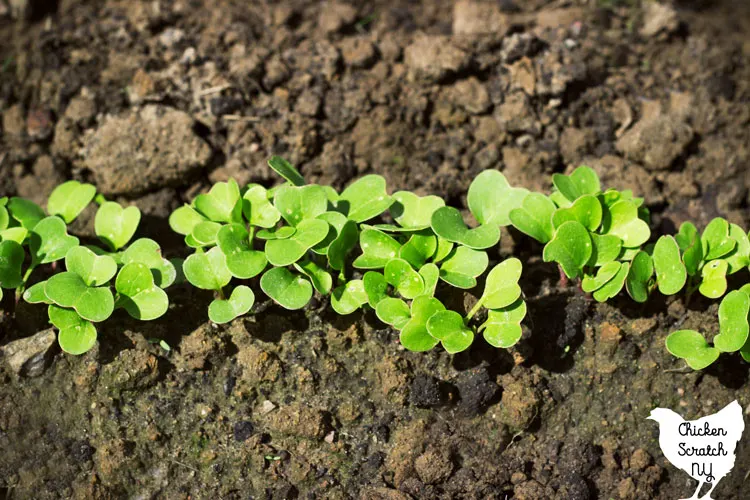
Common insect pests on cole crops are cabbage root fly larvae and flea beetles along with moths & butterflies that lay eggs on the plants that hatch into very hungry caterpillars. Floating row covers, handpicking caterpillars, or ignoring the problem can call be utilized in dealing with these pests.
Cole crops are all eaten for vegetative parts of the plant like leaves, roots, and stems, instead of fruits. That means they don’t need pollinators and they’re happy to live under floating row cover all season as long, just make sure they don’t overheat.
Brassicas tend to be pretty sturdy plants and once established they can handle some serious flea beetle damage. I do recommend soaking your fresh broccoli heads in salty water, it will help get any caterpillars out of the heads before you cook them up.
Less common members of the brassica family include seakale, cress and mizuna.
Chenopodioideae or the Beet Family
Next, we have another small family and perhaps the one makes the least amount of sense. The common garden crops in this family are beets, Swiss chard, and spinach.
If you look really closely at the leaves you can see some resemblance. It is important to note that spinach, lettuce and arugula are not related!

Beet family vegetables are all cool-season crops with edible greens and in the case of beets, tasty roots. Beet (or beetroot) and swiss chard have identical seeds, they’re actually a weird-looking capsule that can contain several seeds.
Read more about Growing & Eating Root Vegetable Crops
Beets do best in soil that has been loosened as deeply as possible, their taproots can reach several feet into the ground. Baby beets & spinach are considered quick crops with only 40 days (baby beets) and 30 days (baby spinach) until harvest.

Beet family plants are largely trouble-free when it comes to pests and diseases. If leaf miners show up on your beet greens just remove the affected leaves.
Less common members of this family include the perennial Good King Henry and red orach or mountain spinach.
Cucurbitaceae or the Gourd Family
After the brassicas, this is probably the largest and most varied vegetable family especially when you get into individual varieties. The cucurbit family includes summer & winter squash, gourds, melons, watermelons, and cucumbers.
These plants are all known for being large with trailing or climbing vines, having large yellow flowers, and for being hungry, they want rich soil and constant moisture. They’re also really sensitive to the cold and require warm weather to grow.

Depending on your season length you might need to start your seeds indoors for a head start. The vegetables in this family aren’t that fond of being transplanted so start them in large pots and get them in the ground asap.
If you’ve ever grown zucchini you know how quickly these plants go from 0 to 120. If you keep the fruit picked (that’s right, they’re technically a fruit) these plants will just keep producing.
I don’t know if you can have soil too rich for these guys. I clean out my alpaca pen in the fall, dump all the poo in the beds and then use those beds for my zucchini and summer squash the next year.
Zucchini and summer square grow in a ‘bush habit’ with one main vine that doesn’t get very long. Even though plants are pretty hefty after you include the giant leaves they still fit into smaller gardens quite well.

Cucumbers have a more vining nature and can easily be grown-up trellis thanks to their curling tendrils that hold on for dear life. Every year I try to grow cucumbers, our summers are very humid I struggle constantly with powdery mildew, this year I’m only growing resistant hybrid varieties.
Read more about The Value of Hybrid Seeds in the Vegetable Garden
Winter squash, melons, and watermelons are the big guys with long aggressively spreading vines that pretty much take over. If you have a small garden you might have to skip these guys or seek out small cultivars like Honeynut winter squash, a compact butternut squash.
Cucurbit family pests include vine borers and cucumber beetles which can spread diseases. While you can grow them under row covers for protection they do require pollination (cucumbers bred for greenhouse growing don’t need pollination) and you’ll have to remove them if you want fruit or pollinate by hand.
They are also susceptible to downy & powdery mildew and viruses. The best way to deal with these issues are by growing resistant varieties.
Fabaceae or the Legume Family
At first glance this family seems pretty simple, garden peas and green beans, right? But there is more to this family than those two.
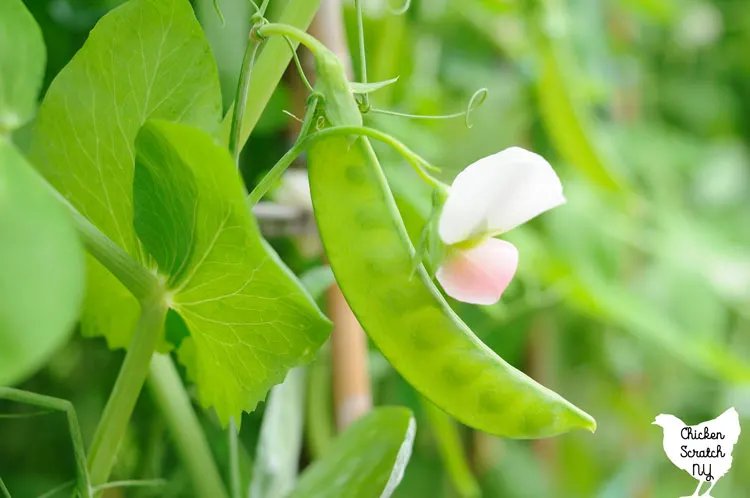
The legume family includes all of the peas (shelling, snap & sugar), beans (bush, lima, & pole), and broad beans (aka fava beans) as well as alfalfa & clover, which are either grown as cover crops or as sprouts.
Read more about Growing Sprouts for Fresh Food Anytime
They are grown in the vegetable garden specifically for their seed pods that can be eaten at different stages. Green beans, snap and sugar peas are all eaten in the immature phase pod and all; fava beans, shell peas, shell beans, and lima beans are eaten when mature and dry beans are eaten cooked after drying in the pod.
The plants in this family all have root nodules that contain rhizobium bacteria that fix nitrogen in the soil. That means they produce their own nitrogen fertilizer and improve the soil as they grow.
The majority of the plants in this family are vining and will gladly scramble up a trellis, fence, poles or even sunflowers. Bush beans and fava beans grow on sturdy stems that can support themselves.
The big divide in the family is the season when they grow the best. Fava beans & peas require cool weather and they are some of the earliest plants to get started in the garden.
Learn more about Early Spring Vegetables to Plant Before the Last Frost Date
On the other hand, beans are not happy unless the soil and air are warm. Lima beans require the most heat, I’ve never had that much success in my central NY garden but I also don’t really like eating them, I just can’t resist a beautiful Christmas Lima Bean.
There are some legume specific pests, snails and slugs are happy to wipe out young seedlings, but I have the most problems with rabbits. If they aren’t busy making a nest and having babies in the garden they’re snacking on my bean plants.
Less common members of this family include fenugreek, asparagus pea and trefoil.
Solanaceae or the Tomato Family
The Solanaceae or Nightshades are the queens of the summertime garden. This family is made up of tomatoes, eggplants, sweet & hot peppers, and potatoes (not sweet potatoes, they’re related to morning glories).
Tomatoes, eggplants, and peppers are all heat-loving annual vegetables that are started indoors from seed and moved outside after the ground has warmed up and the last frost date has passed.
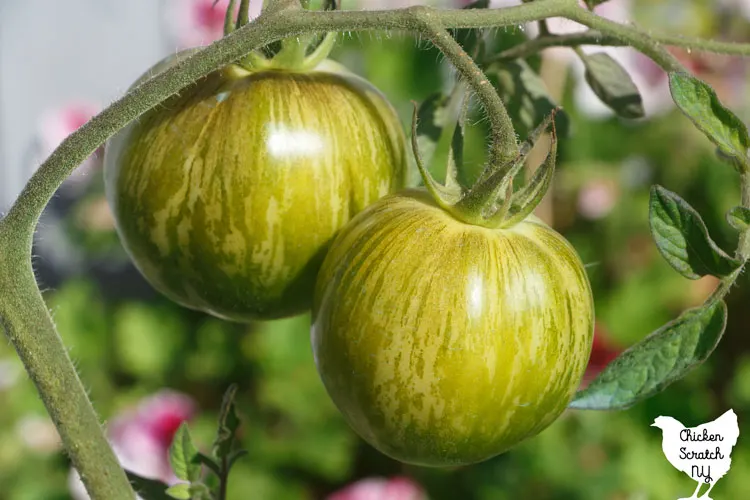
They can be grown in the ground or in pots, unlike tomatoes, peppers and eggplants grow on bushes and don’t require trellising. They also do well in greenhouses.
One benefit to potted plants is you can move them indoors during the early frosts to protect the plants and keep them growing a bit longer to allow the fruits to ripen on the vine. This is helpful if you have short summers or unpredictable weather.
Read more about Tomato Varieties
Potatoes are grown from potatoes that are planted in deep furrows, as the plants grow the dirt is filled in around them and hilled up. The new potatoes will grow underground and need to be protected from the sun.
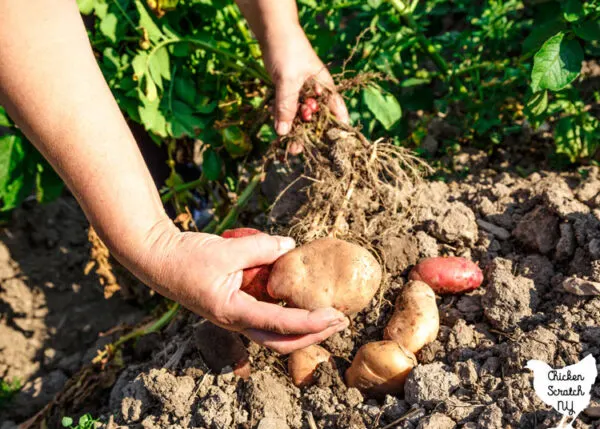
If you lack the space to grow potatoes in the ground there are lots of options from building towers or using grow bags that can help you get your potato on.
There are lots of fun options for seed potatoes that you won’t likely find in the store unless you’re at a specialty market looking to spend a lot of money. I love growing blue or purple potatoes and long skinny fingerling potatoes.
Umbelliferae or The Carrot Family
The final vegetable family is the carrot family. This family includes carrots, parsnips, parsley, fennel, celery, celeriac, and dill.
This group covers a wide variety of crops; the family resemblance is clearest when the plants are flowering. They all have large, flat-topped or domed, umbrella-shaped flower heads covered in tiny white florets.
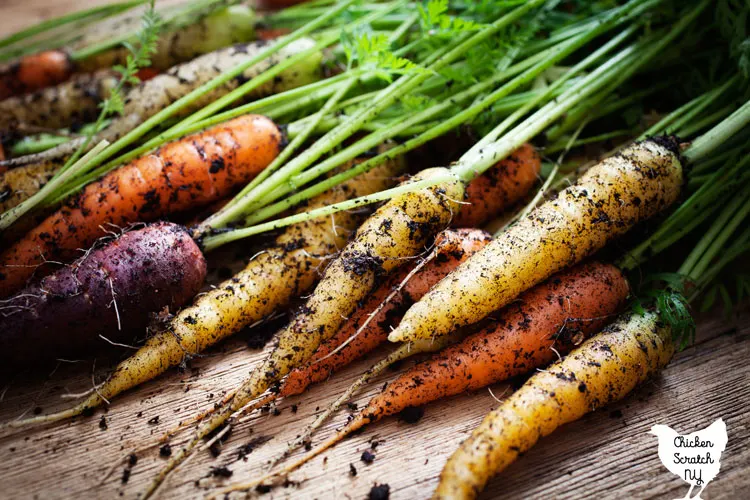
The root vegetables in this family do best in deeply dug soil. Parsnips can take up to 3 weeks to germinate and they require constant moisture the entire time.
All members of this family require soil filled with organic matter that holds on to water and maintains a constant level of moisture.
Celery and celeriac require a long growing season and are usually started under grow lights and moved out into the garden after the last frost date.

The main pest for crops in this family is the Carrot Rust Fly. Their larvae eat away at the roots of carrot family crops and can make parsnips more susceptible to parsnip canker.
They are also great host plants for Black Tiger Swallowtail caterpillars. I’m a sucker for a caterpillar and I either let them eat my dill or move them to some wild Queen Ann’s lace.
Lesser known members of this family include skirret, Hamburg parsley (root parsley) and turnip-rooted chervil.
The Lone Wolf
You may have noticed a missing vegetable on this list. Sweet corn isn’t related to any other garden crops.
That makes it a great crop for working into a rotation, you can pretty much put it anywhere you didn’t grow corn last year.
Check out my Vegetable Garden page for more ideas or start here:


